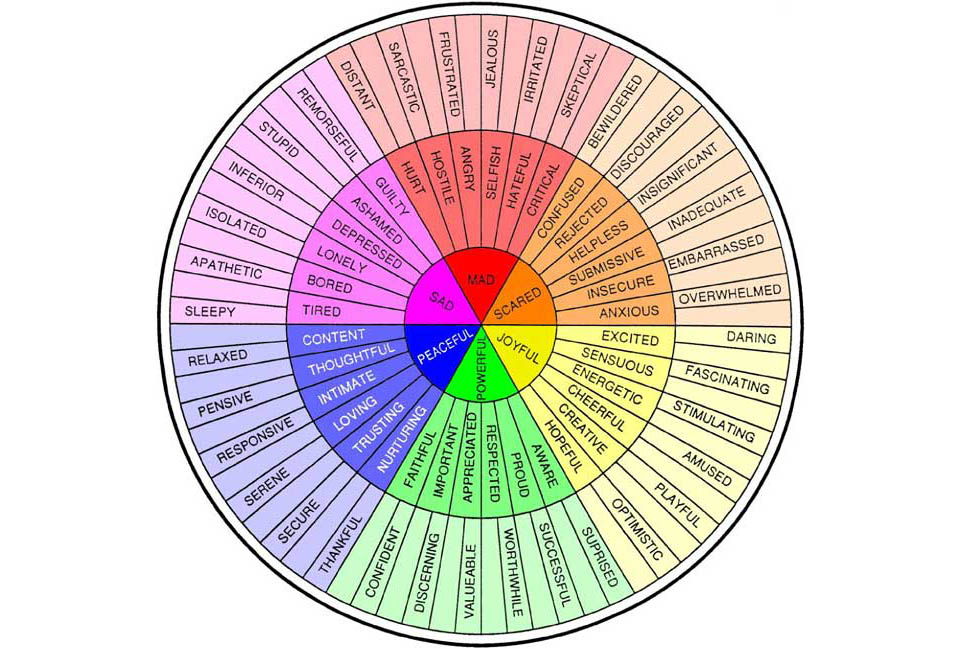How to Use “The Feeling Wheel”
In the book I’m a Type A—How the Heck Will I Ever Retire? I stress the importance of Type As being aware of their feelings and emotions as a way to better being able to relax. It is often unaddressed feeling and emotions that make it difficult for Type As to quiet their minds and fully relax.
I discuss in my book the concept of the “Feeling Wheel,” which was developed by Dr Gloria Willcox. It is very useful in identifying the specific feelings and emotions you are experiencing at any given point in time so that they can be addressed and resolved.
There are two main ways of utilizing the wheel that I have found helpful. The first is to simply use it to identify what it is you are currently feeling, and “drill down” further to discover associated feelings, so you can understand better your current state of mind and emotions. To do this, you might sit down and look at the wheel when you have a moment to rest and contemplate, like after the end of a long day. Let’s say, for instance, your first thought when you peruse the wheel is that you are feeling hopeful. Once you find hopeful on the middle band of the wheel, you can see that the associated core feeling (nearer the center) is joyful, and the more specific, nuancedeeling (on the outer band) is optimistic. Maybe you had a particularly good day at work because your boss praised you for a project that was especially well done, and you are feeling joyful, hopeful, and optimistic about life. Good for you. Savor it!
You can use this “drill down” concept to also explore deeper and longer term emotions that may be impacting you. Let’s say you have been feeling quite sad over the last several months, or even years, since the time your spouse passed on. By going to the core feeling of sad on the inner band of the wheel, you can look at the two outer bands for feelings associated with sad to try to discover the more detailed, nuanced emotions you are experiencing. You might conclude that you are more specifically feeling lonely and isolated. This is an important discovery, in that it tells you what the specific problem is. You might then decide that you could benefit from getting out more, socializing, and developing or reinvigorating friendships.
This example leads to the second key way you can use the wheel. If you are feeling sad, lonely, and isolated, the wheel provides the positive feelings you would prefer to experience, located on the exact opposite side of the wheel. You can now see that the positive core feeling that contrasts with sad is joyful. The converse feeling from lonely (which is on the middle band out from sad and 3 up) is energetic (on the middle band from joyful and 3 down). Likewise, the converse feeling from isolated (on the outer band associated with lonely) is stimulating (on the outer band associated with energetic). So, you’d like to replace the feelings of sad, lonely, and isolated with the emotions of joyful, energetic, and stimulating. As you pursue new relationships and friendships, these are the feelings you will seek to embrace.
I want to emphasize that the Feeling Wheel, and the exploration of feelings in general, should not be focused primarily on replacing negative feelings with good feelings. You should also consider simply embracing so-called “bad” feelings for what they are. They are okay, and you are okay, and human. They add texture to our lives and make the good times all the sweeter.
The last observation I’ll make about the Feeling Wheel is that there are some feelings that are missing that I’d like to see represented, such as “pissed off at my spouse” and “ready to strangle my boss.” I think these are pretty common human emotions that should be on the wheel!
Source Type A Lifestyle.
